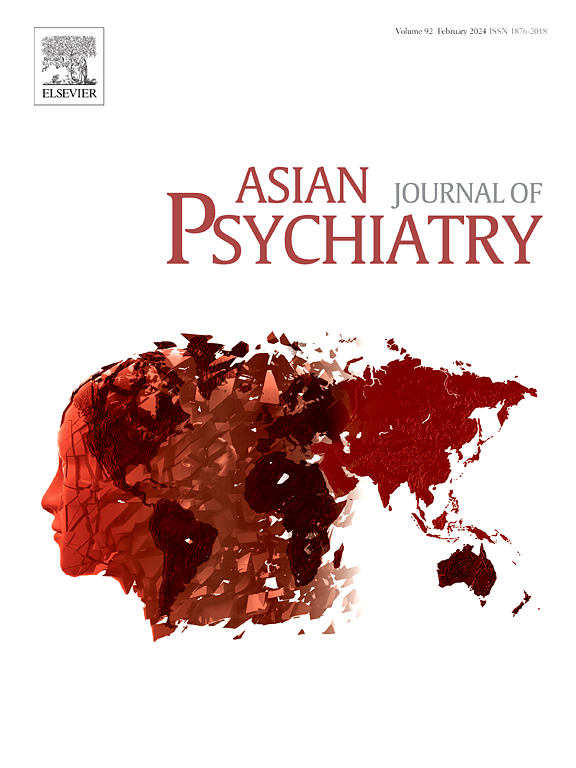A bibliometric analysis of 100 most-cited articles on behavioural and psychological symptoms of dementia (BPSD)
IF 3.8
4区 医学
Q1 PSYCHIATRY
引用次数: 0
Abstract
Background
BPSD are a heterogeneous neuropsychiatric symptoms that are highly prevalent in persons with dementia (PwD). Understanding research trends on BPSD field is important to appraise and guide future research.
Objectives
The purpose of this study was to analyze the 100 most cited articles about BPSD using bibliometrics, and to describe the current trends, patterns, types, area of work done and lacunae.
Material and methods
The Google Scholar database was searched using a freely available software, Publish or Perish for retrieving 100 most cited articles on BPSD following PRISMA guidelines. Information related to citations metrics, journals, country of origin, institution of origin, study design and primary area of work was collected.
Results
The total citation count ranged from 75 to 9096 [mean(SD):343.86(946.24)]. The citation count per year ranged from 3.94 to 303.3. The normalised citation count ranged from 0.09 to 3.57. The maximum number of articles were published in 2005 and 2013 (n = 9 each). John Hopkins University (n = 9) and International Journal of Geriatric Psychiatry (n = 24) contributed to the maximum articles. Nearly 90 % of articles came from high income countries.
Conclusion
Cross-sectional studies and systematic reviews were the most common study methods in the BPSD research. Epidemiological and interventional are the most studied primary areas. Lack of adequate studies with RCT design, qualitative studies and areas including predictors of BPSD, quality of life, cost analysis and staff training was observed. There is markedly lesser research from middle and low-income countries on BPSD.
求助全文
约1分钟内获得全文
求助全文
来源期刊

Asian journal of psychiatry
Medicine-Psychiatry and Mental Health
CiteScore
12.70
自引率
5.30%
发文量
297
审稿时长
35 days
期刊介绍:
The Asian Journal of Psychiatry serves as a comprehensive resource for psychiatrists, mental health clinicians, neurologists, physicians, mental health students, and policymakers. Its goal is to facilitate the exchange of research findings and clinical practices between Asia and the global community. The journal focuses on psychiatric research relevant to Asia, covering preclinical, clinical, service system, and policy development topics. It also highlights the socio-cultural diversity of the region in relation to mental health.
 求助内容:
求助内容: 应助结果提醒方式:
应助结果提醒方式:


